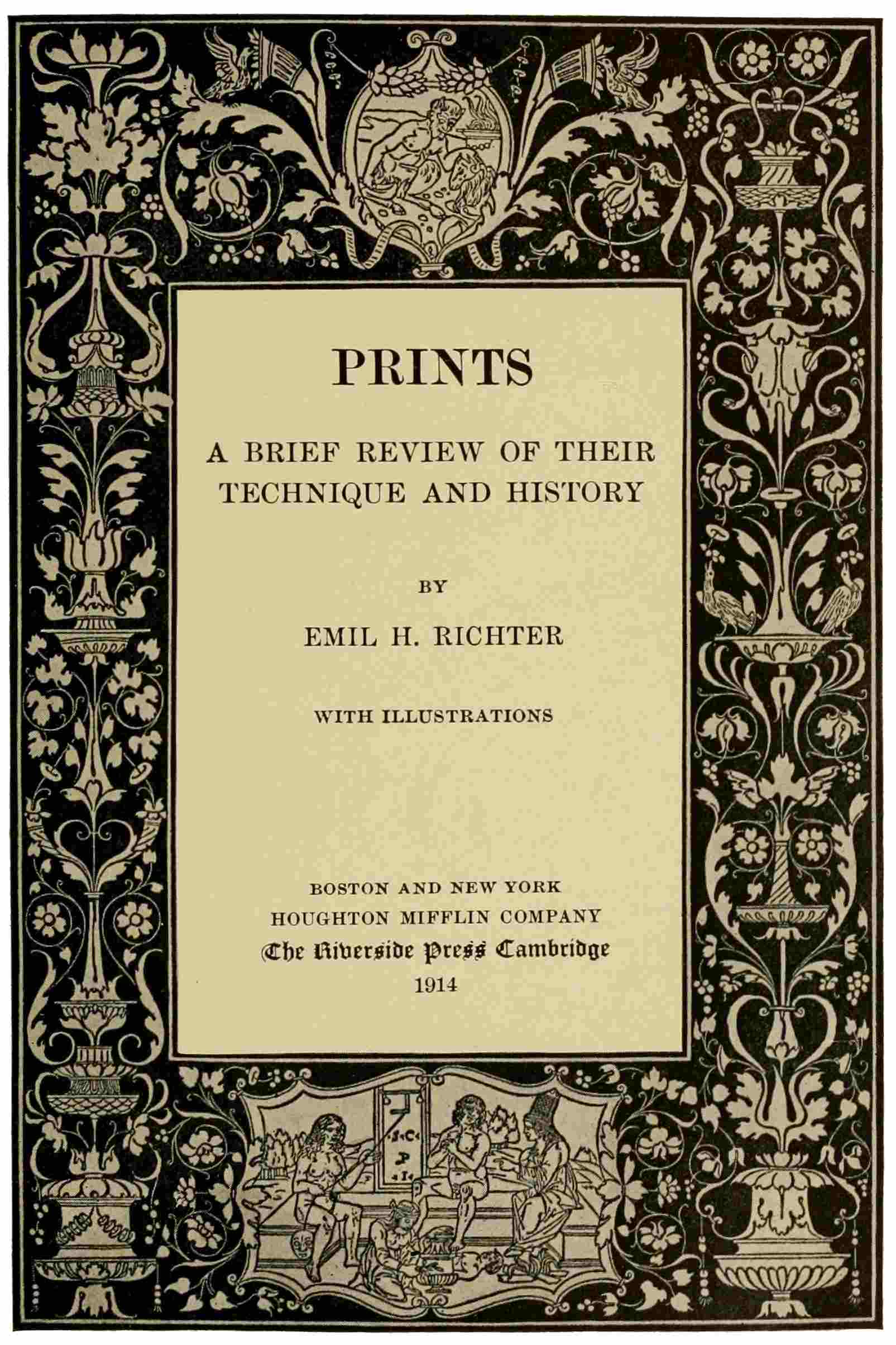E-text prepared by deaurider, Charlie Howard,
and the Online Distributed Proofreading Team
()
from page images generously made available by
Internet Archive
(https://archive.org)
| Note: | Images of the original pages are available through Internet Archive. See https://archive.org/details/printsbriefrevie01rich |
Transcriber’s Note
Larger versions of most illustrations may be seen by right-clicking themand selecting an option to view them separately, or by double-tapping and/orstretching them.
PRINTS
A BRIEF REVIEW OF THEIR
TECHNIQUE AND HISTORY

PRINTS
A BRIEF REVIEW OF THEIR
TECHNIQUE AND HISTORY
BY
EMIL H. RICHTER
WITH ILLUSTRATIONS
BOSTON AND NEW YORK
HOUGHTON MIFFLIN COMPANY
The Riverside Press Cambridge
1914
COPYRIGHT, 1914, BY HOUGHTON MIFFLIN COMPANY
ALL RIGHTS RESERVED
Published November 1914
v
PREFACE
Prints have long been an undisturbeddomain of the collector and scholarly connoisseur.Centuries of study and researchare resulting in the identification and descriptionof this vast amount of material.The literature on prints embodies theseresults in the form of handbooks, histories,catalogues for reference, essays, and specializingtreatises. These are written primarilyfor the use of students and collectors, withthe elaboration and detail requisite for thisclass of readers.
Manifestations of a widening interest aremore evident every day. With this broadeningpopular interest has come a demand fora plain, short explanation of “prints.” Inthe absence of such a brief review and inanswer to repeated inquiries, a series of lectureswere prepared and delivered—someviyears ago—by the writer. These lecturesare herewith offered, in slightly revisedform, to those interested in the nature anddevelopment of prints.
This little book is not a compendium ofthe graphic arts, just an introduction. Brevityand simplicity have been aimed at, thepurpose being to awaken interest and conveyinitial information conducive to furtherstudy.
The charm and value of a print lies essentiallyin the quality of line or tone peculiar tothe process employed in its making. Thesecannot be rendered adequately by the half-toneillustrations which accompany thesepages. The prints themselves must be seento be truly appreciated and understood.
vii